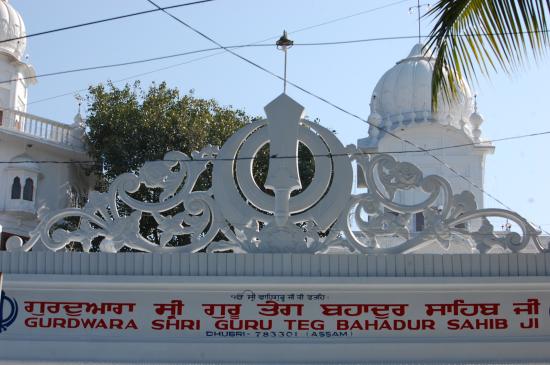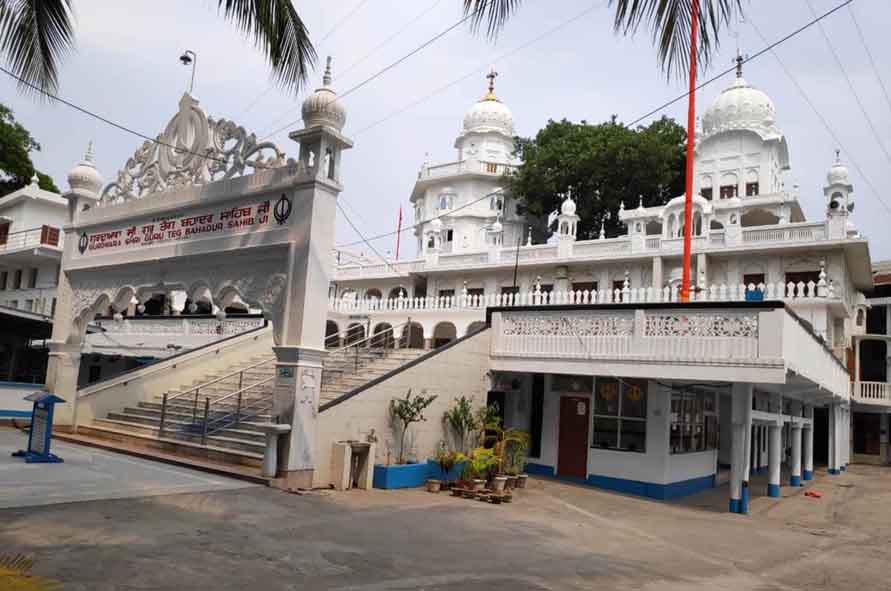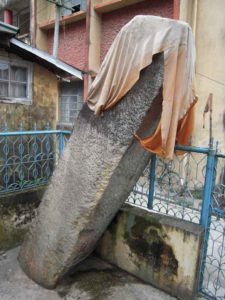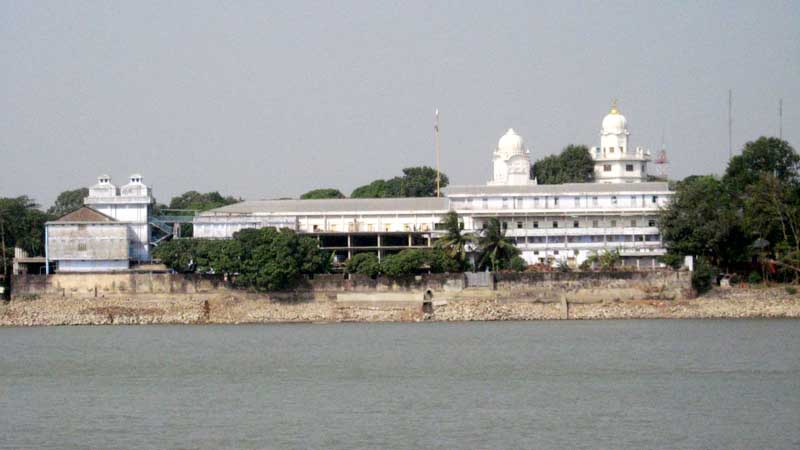Tracing Guru Tegh Bahadur’s hallowed Journey from Sutlej to Brahmaputra
![As the Sikh community celebrates the 400th Birth anniversary of the Ninth Master -Guru Tegh Bahadur, spiritually-inclined chronicler Bhupinder Singh recounts the visits of Guru Sahib to Assam. This is a little less known fact and historians disagree on certain aspects of Guru’s journey there, yet it is a good exploration by the author, laying the path for more documentation and historical research. GURU TEGH BAHADUR, AFTER ASSUMING THE MANTLE OF GURU visited Amritsar in November 1664. Then he came […]](https://www.theworldsikhnews.com/wp-content/uploads/2020/12/Dhubri-Gurdwara-sahib-asam-360x266.jpg)
As the Sikh community celebrates the 400th Birth anniversary of the Ninth Master -Guru Tegh Bahadur, spiritually-inclined chronicler Bhupinder Singh recounts the visits of Guru Sahib to Assam. This is a little less known fact and historians disagree on certain aspects of Guru’s journey there, yet it is a good exploration by the author, laying the path for more documentation and historical research.
GURU TEGH BAHADUR, AFTER ASSUMING THE MANTLE OF GURU visited Amritsar in November 1664. Then he came to Kiratpur, but did not stay there long and decided to found a new township called Chak Nanaki (later renamed Anandpur Sahib) on the banks of Sutlej River in June 1665. Soon he started out on his missionary journey stopping at Patiala.
From there he moved Kaithal now Haryana, and moved further east following the same route hollowed by Guru Nanak in his first Udassi. At Patna Guru Sahib left his family and moved to Dacca in October 1666. Guru Ji moved further east in efforts to revive sangats (congregations) at various centers established by Guru Nanak during his Udassi journey. Guru Sahib stayed at Chittagong till the end of 1667. After visiting Naokhali, Chandpur and Narayan Ganj Guru Ji returned to Dacca in early 1668.
The emperor Aurangzeb was informed of the losses of Guwahati on 19 December 1667. He commissioned Raja Ram Singh of Amber, son of the famous Mirza Raja Jai Singh, to retake Guwahati. Ram Singh left Delhi on 27 December 1667, halting on the way at Patna to pay respects to Guru Ji. There he met Mata Nanaki, Guru Sahib’s mother and Mata Gujri and came to know that Guru Tegh Bahadur was in Dacca on a missionary tour. In the neighborhood of Mongher, Bihar; while returning from Dacca Guru Ji met Amber Rajput chief, Raja Ram Singh. Raja Ram Singh upon meeting Guru Ji persuaded him to come to Ahom kingdom with him.

Guru Tegh Bahadur in Assam
Guru Ji agreed and they finally reached Dhubri in February 1669. Guru Tegh Bahadur camped at Dhubri while Raja Ram Singh camped with his forces at Rangamati Fort 23 KM from Dhubri. Guru Ji chose Dhubri as it was a historical place visited by Guru Nanak Dev Ji during the first Udassi.
Raja Ram Singh was accompanied by Rashid Khan, ex-faujdar of Guwahati. The details of forces of Raja Ram Singh are as under:
- 4,000 troopers (from his char-hazaari mansab)
- 1,500 ahadis (soldiers recruited by the Emperor)
- 500 barqandezes
- 30,000 infantrymen, 21 Rajput chiefs (Thakurs) with their contingents,
- 18,000 cavalry
- 2,000 archers and shield men and
- 40 naval ships
Armies from Cooch Behar joined the Mughal forces since they were vassals.
The Ahoms, anticipating a Mughal strike because of their annexing of Guwahati, are said to have followed his movements from Delhi itself. The Ahom ruler at that time was Chakradhawaj Singh and his Commander-in-Chief was Lachit Barphukan. When Lachit surveyed the massive Mughal force later, he was moved to tears and he uttered; “It is a tragedy that my country is facing this dire catastrophe during my Phukanship. How will my king be saved? How will my people be saved? And how will my posterity be saved?”

The Imperial Army was very confident of its massive strength but was not as yet sure whether the five holy men with them would be able to destroy the evil effects of magic and witchcraft of the Ahoms. Just across the river the Ahoms were unnerved by the superior numbers of the Imperial Army, but they were confident that the supernatural powers of their magicians backed by their tactful resistance would keep the attackers at bay. The Ahoms resorted to guerilla warfare. With their knowledge of terrain they were harassing Mughal forces.
Few skirmishes took place and Ahom king ordered tactical withdrawal of his troops from the line of engagements. He asked his retreating forces to reinforce the defenses of Guwahati.
The Ahom women magicians employing their tantric paraphernalia began reciting mantras for destruction of Guru Sahib’s encampment directly across the river. All their magic spells failed to harm the Guru. In desperation from across the river they hurled a 26 feet long stone, which came arcing across the sky like a missile and struck the ground, near Guru’s camp, so hard that nearly half of its length was embedded in the ground. It can still be seen today in the same position. Next, they launched a pipal tree towards Guru Sahib, and it landed close to where Guru Sahib was sitting, but no damage was inflicted. Guru Sahib finally shot an arrow taking aim at the altar from where the operations were being orchestrated.
Suddenly, the whole operation of magic came to a halt. Then women magicians realizing folly of their efforts, they came to Guru Ji asking for forgiveness. The woman leading the magic operations was Neta Dhoban or washerwoman. She was only fighting the foreigner, she said, with the only weapon at her command, of which her people were proud. During that meeting Guru Ji assured that he would mediate between the Ahoms and Raja Ram Singh to avert the war. Raja Ram Singh was insisting on the return of Guwahati. Guru Ji acting as mediator was able to negotiate peace which allowed Guwahati to remain with Ahoms.

Lachit outmaneuvered the army of Raja Ram Singh at every battle, which led to the stalemate of the war. Aurangzeb asked his general to initiate diplomacy and sign a friendly treaty for the time being. But Lachit’s trusted Lieutenant Atan Burhagohain, who later became the Commander-in-Chief, opposed such a deal stating that the treaty would be an example of typical Mughal treachery. He further argued, what was the guarantee that once the Mughals take Guwahati, they would not reach further east for Gargaon or even Namrup.
Guru Tegh Bahadur in Cooch Behar
Guru Tegh Bahadur Ji left for a preaching tour of Cooch Behar areas. The Ahoms taking advantage of the end of monsoon rains would raid Mughal fortifications at night and harass them. Raja Ram Singh was so annoyed that he wrote to Lachit; “Being unable to match with us you are adopting tricks employed only by thieves, just as jackals contrive the death of wild elephants. No honor accrues in fighting with such dotards. So, I am not going to fight any longer.” The negotiations were prolonged from February 1669 to December 1669. The Ahom generals realized that their guerrilla attacks could not achieve specific military results beyond harassing the enemy.
Guru Tegh Bahadur returned from his tours and negotiations were restarted. The settlement was reached in terms of which Raja Ram Singh no longer pressed the demand of Guwahati. After the peace agreement was signed Ahom King invited Guru Ji to Kamakhya temple and honored him there. The happy occasion of the peace settlement brought about by the efforts of Guru Tegh Bahadur was celebrated by a joint homage to the shrine of Guru Nanak by the Mughal and Ahom armies.
Guru Tegh Bahadur in Kamakhya Temple, Guwahati and meeting with the Ahom King
Guru Tegh Bahadur assured the magicians that he would work to bring peace between Raja Ram Singh and the Ahom King, for which a change of heart was necessary on both sides. Consequently, he advised Raja Ram Singh to achieve his ruler’s objectives through peaceful negotiations and not to fight unless he was attacked. The rest of the story is a part of the history as to how he succeeded in patching up the differences between the imperial commander Raja Ram Singh and the Ahom king of Assam. The grateful Ahom king invited Guruji to the Kamakhya shrine, where he was honoured with great respect.
The mound of peace was erected with the red earth carried by the soldiers of the armies using their shields as pans. It is said that each soldier carried 5 shield loads of red earth and dumped there to raise the mound. This permanent monument to Guru Tegh Bahadur’s successful peace efforts stands in Dhubri to this day. The name Dhubri was given by Guru Ji as a remembrance for her remorse of Dhoban hurling the missiles in the form of rock and pipal tree. Now a Gurudwara stands on the mound and it is called Thara Sahib or Damdama Sahib. From here before the monsoon of 1670 Guru Ji returned to Dacca and then visited Jagannath Puri before returning to Patna via Bongaigaon in May 1671. It was on return only that Guru Ji first saw his son Gobind Rai. Guru Tegh Bahadur and family reached Anandpur after leaving Patna in February 1672.
Events in Assam after Guru Tegh Bahadur Ji’s departure
Although Guru Ji had left Dhubri, from the reading of Assam history the events took a tragic turn. Soon the ruler Chakradhawaj Singh died and was succeeded by his brother Udayaditya Singh who asked his generals to wage a full-fledged war. A period of battles between the Ahom and Mughal forces in the region of Guwahati followed, with varied results, forts changing hands many times. Lachit led the fight in1671 the battle of Saraighat and inflicted a crushing defeat to the Mughals at every front. It appears that the Ahoms preferred to take on the Mughal army in water since this was a difficult and unknown terrain for the later. Thus, water warfare and the Burj (the small boat-like structures on which the army was stationed) played an important role in favor of the Ahoms in the Battle of Saraighat.
Battle of Saraighat
When the final battle of Saraighat started in early 1671, Lachit was terribly unwell. However, despite being ill, he displayed tremendous valor and exemplary leadership. Such an action by an ailing yet forceful Lachit motivated his troops. They fought the battle with a fierce zeal and intense courage. The Mughal army suffered comprehensive defeat in the hands of Lachit’s army. Lachit Borphukan died a natural death at Kaliabor about a year later in April 1672. This was not the final battle between the Ahoms and the Mughals, nor did Guwahati remain with the Ahoms for long. Lachit Borphukan’s own brother and successor Borphukan, Laluk Sola, deserted Guwahati for the Mughals in 1679. It remained with the Mughals until 1682, when the Ahoms under Gadadhar Singh recovered it thus ending Mughal control in Kamrup forever. Lachit is revered in Assam as a hero and a patriot.

Conclusion
So, we see this Chapter of Guru Ji Tegh Bahadur’s travel to east was to renew the relationship of Sikhs with Guru, but it turned out that the timing was tumultuous from Assam’s historical perspective. The details of the journey in parts of Assam and adjoining areas are not fully explored. It is hoped that this write-up can stir some interest and a thorough research is carried out so that all the details are historically captured.
References:
1. Singh, Ranbir. Guru Tegh Bahadur; Divine Poet, Savior and Martyr. Chief Khalsa Diwan. 1975.
2. Singh, Dr. Trilochan. Guru Tegh Bahadur: Prophet and Martyr. Gurdwara Parbandhak Committee, Delhi. 1967.
3. Kohli, Dr. Surindar Singh. The Sword and the Spirit. National Book Shop. Delhi
4. Dil, Dr. Balbir Singh. Guru Tegh Bahadur: Jeewan Te Rachna (Punjabi). Punjabi University. 1975.
5. Singh, Fauja & Talib, Gurbachan Singh. Guru Tegh Bahadur: Martyr and Teacher. Punjabi University. 1996.
6. Singh, Dr. Hakam & Chadha, Jaswinder Singh, India’s Guru Martyr: Guru Tegh Bahadur.
7. https://www.bbc.co.uk/religion/religions/sikhism/people/teghbahadur.shtml
8. http://www.assaminfo.com/tourist-places/51/gurdwara-sri-guru-teg-bahadur-sahib-dhubri.htm
9. https://en.wikipedia.org/wiki/Gurdwara_Sri_Guru_Tegh_Bahadur_Sahib
10. https://en.wikipedia.org/wiki/Battle_of_Saraighat
11. https://www.organiser.org/Encyc/2019/11/24/Lachit-Borphukan-The-Unsung-Hero-of-Ahom-Kingdom.html
12. http://www.assaminfo.com/tourist-places/51/gurdwara-sri-guru-teg-bahadur-sahib-dhubri.htm
13. https://en.wikipedia.org/wiki/Battle_of_Saraighat
Videos References:
Spiritual Journey of Turban Traveler by Amarjeet Singh Chawla
Episode 85 – Compromise reached between 2 parties in 1670. Also on the sign board at the Gurudwara Dumdama Sahib, Dhubri
Episode 89 – Guru Ji visited Kamakhya Temple and gave hand written transcript which was shown at duration 9:15 minutes of the episode
 Print
Print

 269
269


One thought on “Tracing Guru Tegh Bahadur’s hallowed Journey from Sutlej to Brahmaputra”